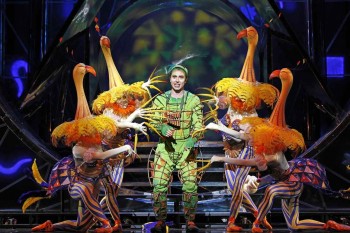More magic needed for this Flute
In 2005, the New York Metropolitan Opera created an abridged family-friendly version of Mozart and Schnikeneder’s The Magic Flute. Heading the creative team was Julie Taymor, Tony-winner for her direction of the uber-gorgerous stage production of The Lion King, and the result is as magical as Mozart could ever have imagined with flying bird puppets that sweep across the audience, Ladies with floating heads, adorable giant dancing bears and intimidating fire-faced priests

Having loved The Lion King and Taymor’s film work, my expectations for this production were high; especially as there is no reason why the Opera Australia production shouldn’t be as wonderful as anything at The Met.
Introducing opera to children; introducing opera to anyone is brilliant, and will create a fan for life if that first experience is a great one. As this production was conceived for children, it was wonderful to see people much younger than me in audience. Not only are they better behaved than many dragged-along partners, but they get it; they accept worlds where people sing and magic is natural and don’t roll their eyes because they can hear the set being moved.
Taymor knows that best children’s theatre is just as much for grown ups and never cuts a corner or assumes that young minds aren’t smart, but OA hasn’t quite got the the balance. There seems a reluctance to let go and really have fun, in case the opera-buff adults get upset.
Which leaves the music. The fun, passion and fearless bravado of Mozart’s music will continue to create opera fans for millennia to come. With conductor Adam Chalabi, Orchestra Victoria bring life to the cavernous theatre, Taryn Fiebeg’s crystal voice shone as Pamina, the three Ladies were delightful and Andrew Jones was rightly the audience favourite with his lusty earthy (and oddly Ocker) Papageno. However the men’s voices suffered from the sound-sucking nature of the State Theatre, the chorus didn’t seem that interested in being there and the Queen of The Night had a night I suspect she’d rather forget.
The Magic Flute is as much for children as anyone. If I could introduce anyone to opera, this is where I’d start. I just wish that this production would stop worrying about appealing to everyone and concentrate on the pure joy of telling this story of magic and love.


